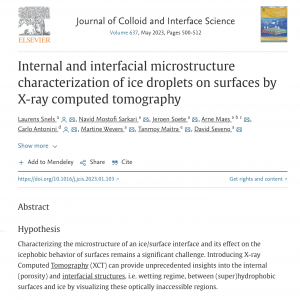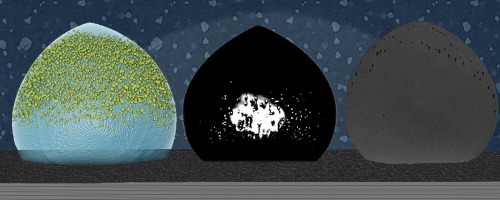Abstract
 Hypothesis
Hypothesis
Characterizing the microstructure of an ice/surface interface and its effect on the icephobic behavior of surfaces remains a significant challenge. Introducing X-ray Computed Tomography (XCT) can provide unprecedented insights into the internal (porosity) and interfacial structures, i.e. wetting regime, between (super)hydrophobic surfaces and ice by visualizing these optically inaccessible regions.
Experiments
Frozen droplets with controlled volume were deposited on top of metallic and polymeric substrates with different levels of wettability. Different modes of XCT (3D and 4D) were utilized to obtain information on the internal and interfacial structure of the ice/surface system. The results were supplemented by conventional surface analysis techniques, including optical profilometry and contact angle measurements.
Findings
Using XCT on ice/surface systems, the 3D and 4D (imaging with temporal resolution) structural information can be visualized. From these datasets, qualitative and quantitative results were obtained, not only for characterizing the interface but also for analyzing the entire droplet/surface system, e.g., measurement of porosity size, shape, and location. These results highlight the potential of XCT in the characterization of both droplets and substrates and proves that the technique can aid to develop hydrophobic surfaces for use as icephobic materials.

